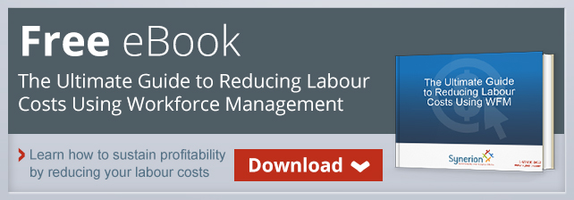
Labour costs are among the highest expense incurred by businesses. Between wages, benefits, training and more, many companies find their workforce costs are inflating beyond control. When this happens, the knee-jerk reaction is to start laying people off. But it doesn’t have to be that way. If you’re wondering how to reduce labour costs for your business, focus on changing these 4 areas of your business. These simple cost saving ideas can help you avoid layoffs while still saving money on your workforce.
1. Your Compensation Policy
Establishing a formal compensation policy ensures that managers link pay raises, bonuses and other forms of compensation to productivity gains, business results and margin increases. Because people resources are such a large cost to most, if not all businesses, ensuring that wages don’t inflate – while still fairly compensating and rewarding employees when it’s due – can help cut both labour and broader operational costs significantly.
2. Your Time and Attendance Tracking
Though workforce costs are necessarily a big expense, they are often much higher than they should be. Many things contribute to inflated employee costs, including buddy punching, unsanctioned overtime, improper distribution of work, absences, improper tracking of vacations and hours worked, and more. In fact, absences alone can account for up to 35% of payroll costs! By improving the management of time and attendance, you can significantly reduce the amount spent on labour – without having to lay employees off or reduce pay.
3. Your Hiring Process
While not exclusively a workforce cost, hiring and training new people can be a huge expense. Even more so if you have high turnover and have to constantly fill and refill positions. Focusing on attracting the right talent from the get go, and properly training them to succeed in their roles, will ultimately help you drive down costs associated with recruiting employees (not to mention, make things easier for HR).
4. Your Cost Reduction Strategy
Short-term cost reduction strategies may solve problems in the interim, but they have the potential to affect long-term financial health. Cutting jobs for example, can lead to a shortage of skills, which in turn can impact the quality of output or customer service. Ultimately, this leads to even higher costs for the organization.
Instead, focus on looking at long-term workforce cost saving ideas, such as more comprehensive workforce management systems, developing change management programs to implement new compensation or HR policies, and so on.
By changing your approach to these four key areas, your business can significantly reduce labour costs, without having to resort to layoffs or other more drastic measures.
